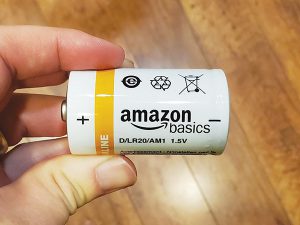Last month, comedian John Oliver delivered a scathing episode on tech monopolies for his show “Last Week Tonight.â€
Between jokes, he laid out some key Big Tech antitrust concerns. Apple Inc controlling the App Store. Alphabet Inc’s Google favouring its own properties in search results. Amazon.com Inc reportedly using third-party seller data to create knock-off private label products.
However, a look at the revenue profiles for each example shows that one of these things is not like the others: Apple’s App Store grossed $70-85 billion in 2021; Google search ads brought in $149 billion in 2021; and which equates to $4.7 billion in 2021.
This is why you should read news that Amazon may be moving away from its private label business to appease regulators with a healthy dose of skepticism: Getting rid of it would hardly represent much of a reform of its anticompetitive practices. It’s also just not that important of a business for the e-commerce giant — in fact, it’s been a breeder of bad PR. But at a minimum, scaling it back could be good for both consumers and its larger universe of third-party sellers. Since launching in 2009 with AmazonBasics batteries, Amazon’s private label has ballooned to “243,000 products across 45 different house brands†as per the Wall Street Journal. And some of these products — including a laptop stand, a chair and a backpack — have been subject to high-profile rip-off allegations over the years.
When asked about the practice in a 2020 congressional hearing, former Amazon CEO Jeff Bezos gave a not-great answer: “we have a policy against using seller-specific data to aid our private label business, but I can’t guarantee you that policy has never been violated.â€
Since a private label business is basically a rite of passage for any major retailer, it’s understandable why Amazon would want one. As the tech analyst Benedict Evans has noted, private label revenue share is sizable for other industry players, including Target (33%), Kroger (25%), Costco Wholesale (20%), The Office Depot (20%) and Walmart (15)%. The WSJ notes that Bezos once wanted Amazon’s in-house brands to achieve 10% of sales. But after more than a decade, that share still hovers at 1% and the negative PR persists.
Juozas Kaziukėnas, the CEO of e-commerce analytics firm Marketplace Pulse, tells me that while Amazon’s knock-off products are “captivating,†there are more “impactful anti-competitive issues†that sellers and regulators should worry about.
Regulators in Europe have zeroed in on some of these issues. Per TechCrunch, the European Union and Amazon are negotiating an antitrust settlement that would address questions over seller data, Buy Box, Prime and FBA.
Even if all the negative anticompetitive PR went away, private label brands might not be worth the time when you consider that Amazon’s third-party seller marketplace has 1.9 million sellers and accounts for 58% of the entire company’s sales.
“The third-party sellers carry virtually no inventory risk,†says Kaziukėnas. “For its own private label business, Amazon has to store, import and liquidate products.†While the third-party seller platform has other problems (eg, counterfeit goods), antagonising sellers with the ever-present threat of an Amazon knock-off would seem unproductive.
For its part, Amazon said in an emailed statement that it “never seriously considered†closing the business segment down and will “continue to invest in this area.â€
—Bloomberg
 The Gulf Time Newspaper One of the finest business newspapers in the UAE brought to you by our professional writers and editors.
The Gulf Time Newspaper One of the finest business newspapers in the UAE brought to you by our professional writers and editors.
